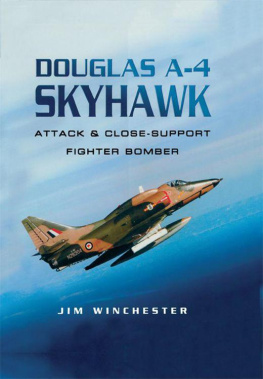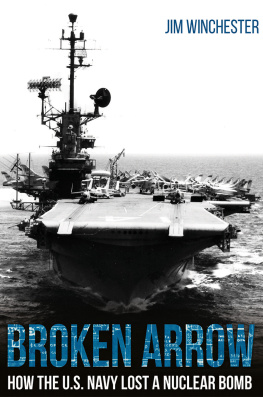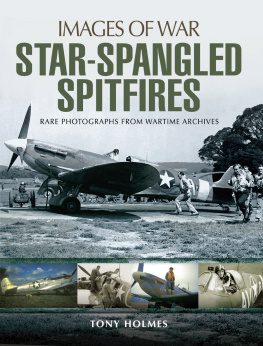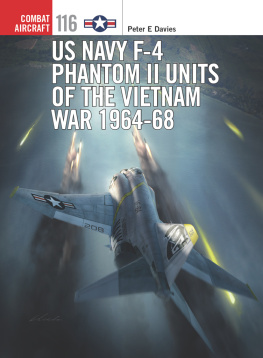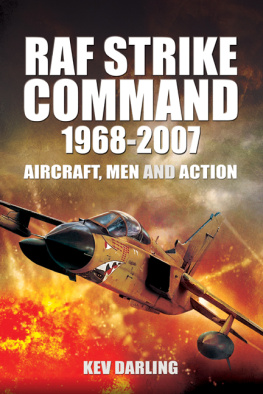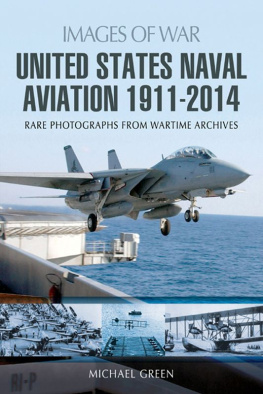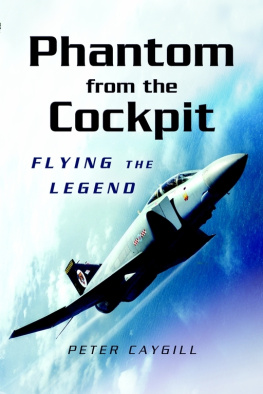A-4 Skyhawk
H EINEMANNS H OT R OD
TA-4Js of VC-8 break for landing at NAS Key West in October 2000. The Redtails were the last of 150 Navy and Marine units to fly the Skyhawk and the only one to take it into the Twenty-first Century.
Author
Douglas A-4 Skyhawk
A TTACK & C LOSE - SUPPORT F IGHTER B OMBER
Jim Winchester
Pen & Sword Books Ltd
B ARNSLEY Y ORKSHIRE
Dedicated to
Edward H. Heinemann, Leo Devlin, R.G. Smith, Harry S. Gann and all those at Douglas and McDonnell Douglas who created, nurtured, refined and promoted the Skyhawk, the greatest attack jet ever built.
First published in
Great Britain in 2005
By Pen and Sword Aviation
an imprint of Pen and Sword Books Ltd
47 Church Street
Barnsley
South Yorkshire
S70 2AS
England
Copyright Jim Winchester 2005
Aircraft profiles copyright David Windle 2005
ISBN 1 84415 085 2
The right of Jim Winchester to be identified as Author of this Work has been asserted by
him in accordance with the Copyright, Designs and Patents Act 1988.
A CIP catalogue record for this book is available from the British Library. All rights reserved. No part of this book may be reproduced or transmitted in any form or by any means, electronic or mechanical including photocopying, recording or by any information storage and retrieval system, without permission from the Publisher in writing.
Typeset in Times New Roman
Printed and bound in Singapore by Kyodo Printing Co. (Singapore) Pte Ltd
Pen & Sword Books Ltd incorporates the imprints of Pen & Sword Aviation, Pen & Sword Maritime, Pen & Sword Military, Whamcliffe Local History, Pen & Sword Select, Pen & Sword Military Classics and Leo Cooper.
For a complete list of Pen & Sword titles please contact
Pen & Sword Books Limited,
47 Church Street, Barnsley, South Yorkshire, S70 2AS, England
E-mail: enquiries@pen-and-sword.co.uk
Website: www.pen-and-sword.co.uk
Contents
It is now fifty years since the A-4 Skyhawk first flew from Edwards Air Force Base in California. It is not the first combat aircraft to remain in service after fifty years, nor will it be the last. It is, however, one of the most loved by those who flew it in combat and in peace, who trained in it, fought in it, worked on it or who relied on it for accurate and effective close air support. Although, like all production flying machines the result of a collaborative effort, the A-4 is one of the last combat aircraft to be associated with a single designer, Edward H. Heinemann, the creator of many legendary attack aircraft.
The Skyhawk was designed and built by Ed Heinemann and his team with one role in mind, that of tactical nuclear delivery from aircraft carriers. Thankfully, no A-4 was ever called upon to carry out that mission, but the basic airframe was so well designed that it proved adaptable to many other uses, and found favour with air arms around the world. No modem equivalent has yet appeared that offers similar performance and payload while remaining as simple to fly and operate as has Heinemanns Hot Rod. Designed for carriage of a single centreline store, the one engine, one man, one way nuclear bomber was soon tested with and adapted for the new generation of low drag weapons racks and stores, also developed by Heinemann and Douglas. Guided missiles soon followed, as did electronic countermeasures and basic radar. Miniaturization of electronics allowed the compact airframe to later accept multi-mode radar and sophisticated navigation and electronic warfare systems, giving many of the capabilities of the F-16 and other third-generation fighters.
More so than most aircraft the Skyhawk attracted nicknames: Scooter, Mighty Mite, Mighty Midget, Tinker Toy and Bantam Bomber among them. The latter at least was an invention of the Douglas public relations department, as was Heinemanns Hot-rod, which appeared in print even before the first flight. Test pilot Bob Rahn said this was his personal favourite.
Many A-4s have had multiple careers. This A-4C served in the ASW fighter role with VA-45 Det 11 on the USS Intrepid in 1971. It and went on to become A-4SU Super Skyhawk 991 with the Republic o f Singapore Air Force.
By 1950s standards the Skyhawk was indeed pocket-sized at a time when fighters and bombers were becoming heavier, more complex and increasingly demanding of maintenance. Heinemanns genius was to insist that every component justify its installation and every pound of its weight. Simplicate and add lightness was the El Segundo mantra in 1952-54 when the Skyhawk took shape.
Heinemanns achievement was to create a cheap, tough aircraft that exceeded the performance targets at less than half the originally specified weight. Even in its basic dash-one version, the Skyhawk could be catapulted from a carrier at more than twice its empty weight. From the A-4A to the A-4M, empty weight increased by 20 per cent, loaded weight by 67 per cent and thrust by 56 per cent. Lightly loaded or stripped of surplus equipment, Skyhawks made excellent fighters on smaller carriers and with smaller air forces, and simulated MiGs in the adversary fighter role when the US military relearned the importance of teaching visual air combat.
Skyhawk production was winding down in 1965 when development of the TA-4 two-seater gave the Skyhawk a whole new lease of life and increased its export potential, as did the installation of the J52 growth engine. Escalation of the Vietnam War spurred new variants and modifications for the new era of SAMs. Continued production for the US Navy and Marines through the 1970s and operation of US TA-4s into and beyond the 1990s ensured a supply of spares to support foreign users.
From 1954 to 1979 in what was then a record length production run, a total of 2,960 Skyhawks were built, 2,668 of them for the US Navy and Marine Corps. The relatively few new-build export models were backed up by sales and transfers of many more refurbished aircraft. Approximately 770 A-4s served with non-US air arms, and this book reflects the importance of the A-4 to those nations that have relied on the Scooter for air defence and attack missions. Two nations acquired Skyhawks from Douglas for their own carriers and a third took the A-4 back to sea in the late 1990s. The strong structure needed for shipboard operations has ensured the longevity of many airframes and their continued operation into the twenty-first century. Many of the foreign aircraft have had several careers. To help trace them, chapter four presents the most comprehensive lists of tie-ups between US Navy Bureau Numbers, manufacturers construction numbers and foreign serials to be published to date. The tables of non-US users represent a great deal of research by the author and many enthusiasts. Nonetheless, the lists for Singapore and Israel, two nations sharing a penchant for secrecy, are incomplete as is that for Indonesia, who acquired most of its A-4s from Israel. It is likely that the full picture will never be known for these air forces, but this book has the most comprehensive accounting of export Skyhawks, their origins and fates yet published.

